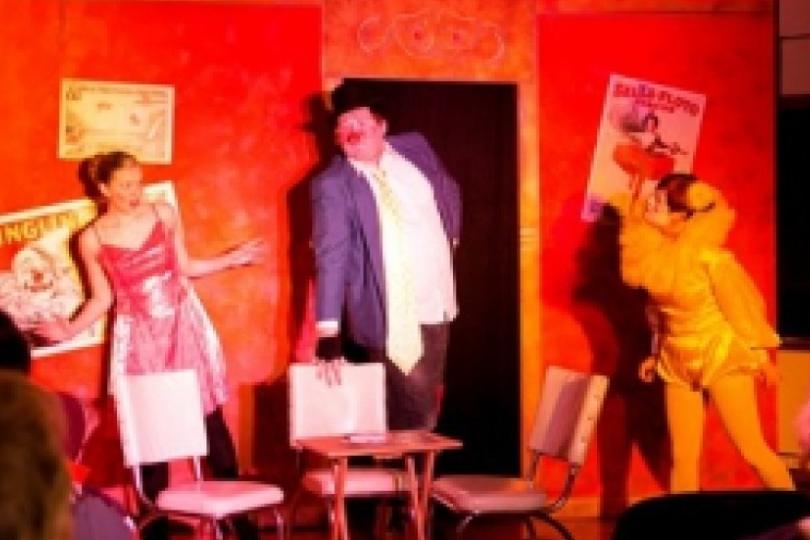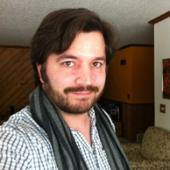Homegrown Theater: Uncommon Loons of Grand Rapids
Editorial

Grand Rapids has a long tradition of community theater. Impressively long, actually. The Grand Rapids Players has been in continuous operation for nearly 50 years, making it one of the oldest community theater organizations in the country. When I moved to this town a little over five years ago, I decided to get back into acting, which was something I hadn't done for close to 10 years. It was refreshing being back on the stage again after such a long hiatus, so I promptly auditioned for the next show, and the next, and the next.
The thing with an organization having such a long, illustrious history is that it can very easily get hung up on the glory days, fixed on how things have been done traditionally. At a certain point, I was growing more and more interested in different types of shows than the Players typically did, such as original works and more experimental theater. I didn't realize it at the time, but I wasn't the only one who thought this.
John Schroeder, who grew up in Grand Rapids and who had returned to town after a stint in college and a year touring with the Ringling Bros. and Barnum & Bailey circus as a clown, wanted more out of the local theater scene, too. He had moved back to his home town around the same time that I moved there, and we both were regularly doing shows. Our first extensive project together was Steven Sondheim's A Funny Thing Happened on the Way to the Forum. He directed and I played Miles Gloriosus, the pompous antagonist. It was during this show that I realized that I liked working with John, and that we had similar aesthetics, particularly in comedy.
This took me aback at first because we're an unlikely pair. In short, I'm a liberal atheist, and he's a conservative Christian. So, on paper at least, we should not be getting along. We do though, particularly because of what we have in common, that being theater (a mutual love of craft beer helps too). The things that we don't have in common, well, we manage to respect the other enough to let those faults slide.
In spring of 2013 I appeared in Grand Rapids Players' production of The Man of La Mancha. The role of Dr. Carrasco was an interesting one to play, but I wasn't fully satisfied with the production. I still wanted to do more original work, with smaller casts, that experimented more with the bottom line of what it means to perform theater; essentially deconstructing the art form in order to focus on the parts that are the most important, and to then build on them.
One afternoon in June, after I finished work, I decided to go to a park a couple blocks away from my office at the Herald-Review newspaper to hang out and read a book. It was a beautiful day, and after the long, drawn-out winter and wet, cold spring, a sunny summer day seemed somewhat necessary. John and his wife Steph felt the same way, and they went out for a walk after their day at work. Being a small town, we ended up in the same general area. They saw me sitting on a bench with my book and decided to join me. Between the sunny day, the neatly trimmed lawn, and our mutual desires to see more theater happen in town, it wasn't long before we were talking about how the space before us would be great for a Shakespeare in the Park-style show. Despite the long history of the Grand Rapids Players, the community theater group had never tackled Shakespeare, oddly enough. We went through the various logistics of what it would take to put on such a show. Ten minutes hadn't gone by before one of us said “So, we're actually going to do this, right?”
Of course, if we were going to do this, it had to be done right. We decided that we wanted to tackle the project independently, not under the umbrella of the Grand Rapids Players. There were a few reasons for this: it was June and we wanted a show put together by the end of August, so we didn't have time to wait for the board to gather for its next meeting to consider the implications of altering their established schedule; we wanted greater autonomy so that we could feel free to creatively do whatever it was we felt like; and, let's face it, we wanted the full credit for the show, especially if it turned out as good as we hoped. We still planned on working with the Players to acquire things like costumes, so we just needed to make sure our relationship with the established community theater was well defined.
The next major decision was what show we were going to do? It seemed the most practical to do a comedy as opposed to a tragedy, since we were looking to do something different in town and people respond better to new things that make them laugh than things that make them cry. I personally pushed for The Taming of the Shrew, since it was one of my long-standing favorites. The Schroeders agreed with the choice.
Since we wanted to do auditions by the beginning of July, I only had two and a half weeks to write an adaptation of the play. It needed to be shortened. And what's more, The Taming of the Shrew really is a funny show, but it's not nearly as funny to us now as it was 400 years ago. Cultural norms have changed, and we simply just don't get the jokes any more. It needed updating. I had never written an adaptation of Shakespeare, but I was too excited about the project to concern myself with trivialities like “never having done it before.”
There was some talk around this time about the greater implications of what we were doing. Were we a new company? Were we just a one-time off-shoot of the Grand Rapids Players? This was when John threw out the name “Uncommon Loons” for the first time, and we all liked it.
Seeing as how we were doing something that hadn't yet been done in Grand Rapids, we had no idea what to expect for audience. We also had very little budget for any type of advertisement. But we weren't without prospects. As luck would have it, the city of Grand Rapids had just formed a new Arts and Culture Commission a few months prior, so we attended one of their meetings to discuss what we intended to do. Since we hoped to do the show at Old Central School park, which was owned by the city, we figured this was an obvious first step. We made some great contacts at the meeting, including one who offered to print the playbills for the show for free, and another who would print our posters at a huge discount. And it shouldn't be left out that my job at the Herald-Review is Arts Editor, so it wasn't overly difficult to get a piece on the show in the entertainment pages.
Despite our efforts to get the word out about the show and what we figured was some clever scheduling on our part, the fact of the matter was that we were doing a show in a place where people are just itching to get on a lake during the short summer months. We kept our expectations low, thinking that we'd probably get 40 per show, maybe 50.
Opening night was hit with a huge thunderstorm. I had made arrangements in advance with the MacRostie Art Center, which was just across the street from the park, to use their gallery for the show in case of bad weather. Apparently we kept our expectations far too low. Even in our rain venue, we had nearly 70 people in attendance. And for the rest of the performances (which, I might add, had beautiful weather each time), we had well over 100 people at each.
After Shrew, a lot of people in the local arts community paid a little closer attention to what we were doing. I credit that scuttlebutt with helping us cast the next show, which was a one-act I wrote called Not Playing with a Full Deck; or Something Has Gone Tarot-bly Wrong. John and I co-directed the show, and prior to doing auditions we talked about who we would want to get if we could just have our pick of local talent. We threw out some names for the three-person cast, came up with a solid top-pick for each character, and we called them. And each of them enthusiastically said yes. Certainly saved time not having auditions.
The January show, despite contending with a streak of ridiculously cold weather (we performed indoors this time), had a larger audience than we thought it would. Participating in the monthly art walk seems to have been good for us, if for no other reason than that it's an event that has a built in audience. We still did some basic advertising, such as posters and a press release for the paper, but the fact that there were other arts to see in close proximity certainly didn't hurt, especially since the show was only 17 minutes long. When the temperature is below zero outside, a 17-minute show probably isn't going to get too many people out of their houses.
For both Uncommon Loons shows so far, we owe a debt of gratitude to the Grand Rapids Players. Between their willingness to share resources and give support, they've been integral to our success so far. Even though we see Loons as a separate entity from the Players, we like to think that there's a symbiotic relationship between the two groups. The full extent of the definition of how we work together has yet to be fleshed out, but we figure only good can come of each group actively working to exploit the strengths of the other.
Looking ahead, we probably have more ideas than we have time to accomplish. We plan on producing more one-act plays during the First Friday art walk, the next of which is currently slated to involve shadow puppets. I'm in the process of adapting Shakespeare's Much Ado About Nothing, and we're all lined up to participate in the first Twin Cities 24 theater festival. Besides being our first show in Minneapolis, this event presents the unique challenge of having to create a 10-15 minute play from scratch in only 24 hours.
Despite our individual differences in politics and religion, if there are any things that the Schroeders and I are in accord with, it's theater and a unique challenge (and craft beer, of course).




